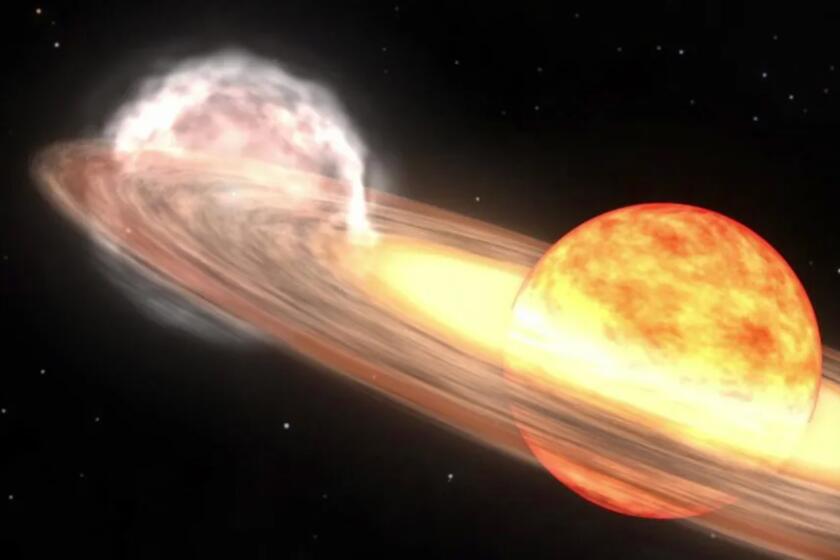Solar storm could disrupt communications and display northern lights to parts of California

- Share via
The National Oceanic and Atmospheric Administration has issued a severe geomagnetic storm watch that could disrupt communications, the power grid, navigation, radio and satellite operations but also generate a nighttime light show.
The category G4 watch from NOAA’s Space Weather Prediction Center — the second such alert issued this year — warns of the possibility of a solar flare for Thursday and Friday, with a resulting coronal mass ejection from the sun that could disturb Earth’s electromagnetic field.
A sunspot group erupted Tuesday night that gave signs of a strong release of solar material and embedded magnetic fields, also known as a coronal mass ejection, which causes geomagnetic storms when they are directed at Earth, according to the prediction center.
The storm’s impact is an estimation, as scientists don’t know for certain the effect of this geomagnetic storm until it arrives near two satellites that are 1 million miles from Earth, said Sean Dahl, service coordinator for the Space Weather Prediction Center.
The coronal mass ejection is predicted to reach the satellites Thursday morning, Eastern time. Experts could not offer an exact time. When that happens, the geomagnetic storm is expected to reach Earth 15 to 30 minutes later.
Astronomers around the world are preparing for one of the most anticipated cosmic firework shows of the year — but you don’t need a fancy telescope to join in.
A severe geomagnetic storm includes the potential for an aurora borealis — also known as the northern lights — visible as far south as Alabama and Northern California.
At this time, scientists couldn’t point to specific times or exact locations where the aurora might be visible.
If you want to catch a glimpse of the aurora, experts recommend that you follow along with the Prediction Center’s aurora dashboard and the 30-minute forecast online for updates.
NOAA experts say the best time for greater aurora visibility is between 10 p.m. and 2 a.m. from a high vantage point with minimal light pollution.
Experts say this severe geomagnetic storm won’t surpass the storm that occurred in May when a storm was caused by a series of coronal mass ejections. This time around there is only one coronal mass ejection and experts believe the duration of the event will be much shorter.
More to Read
Sign up for Essential California
The most important California stories and recommendations in your inbox every morning.
You may occasionally receive promotional content from the Los Angeles Times.










